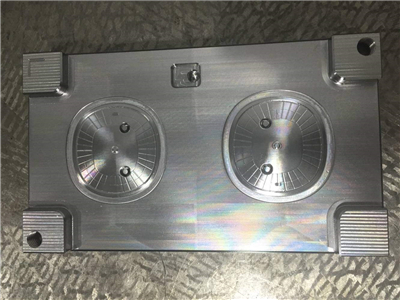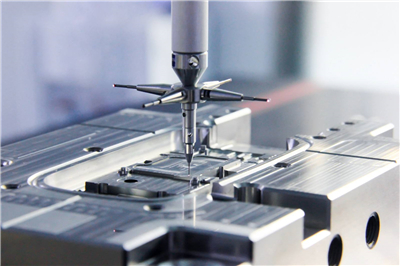The heat treatment of the moulds has a great influence on its service life. Most of the Plastic Injection Moulds damage is caused by improper heat treatment. According to statistics, due to improper heat treatment, die failure accounts for more than 50% of the total failure rate. Vacuum furnaces, semi-vacuum furnaces and non-oxidizing atmosphere furnaces are more and more used for heat treatment of dies abroad.

The mould heat treatment process includes matrix strengthening and toughening and surface strengthening.
(1) The strengthening and toughening of the matrix is to improve the strength and toughness of the matrix and reduce the fracture and deformation. Therefore, the conventional heat treatment of the matrix must be carried out strictly in accordance with the process.
(2)The main purpose of surface strengthening treatment is to improve the wear resistance, corrosion resistance and lubricity of the Plastic Injection Mould There are many methods of surface strengthening treatment, such as carburizing, nitriding, sulphurizing, boronizing, nitrocarburizing, metalizing and so on. The service life of the die can be increased several times or even tens of times by using different surface strengthening treatment processes. In recent years, some surface strengthening processes have appeared, such as the following three major processes:
1.Ion nitriding can be used to improve the corrosion resistance, wear resistance, thermal fatigue resistance and adhesion resistance of Plastic Injection Mould. The prominent advantage of ion nitriding is that the nitriding time is significantly shortened, the structure of nitriding layer can be controlled by adjusting different gas components, the surface brittleness of nitriding layer is reduced, the deformation is small, the hardness distribution curve of nitriding layer is relatively stable, and it is not easy to produce spalling and thermal fatigue. The permeable matrix material is more extensive than gas nitriding, non-toxic, non-explosive and safe in production. However, it is difficult to obtain uniform heating and homogeneous nitriding layer for complex molds with shallow nitriding layer and steeper transition layer. The temperature measurement and homogeneity of temperature still need to be solved. The optimum temperature of ion nitriding is 450-520 C. After 6-9 hours of treatment, the depth of nitriding layer is about 0.2-0.3 mm. If the temperature is too low, the infiltration layer is too thin; if the temperature is too high, the surface layer is prone to loose layer, which reduces the ability of anti-sticking die. The optimum thickness of plasma nitriding layer is 0.2-0.3 mm. The worn ion nitriding die can be put into use after repairing and re-nitriding, thus greatly improving the total service life of the Plastic Injection Mould.

2.Nitrocarburizing process has low temperature (560-570 C) and small deformation. The surface hardness of the treated die steel is up to 900-1000hv. It has good wear resistance, strong corrosion resistance and high temperature hardness. It can be used in die casting die, cold heading die, cold extrusion die, hot extrusion die, high speed forging die and plastic die. Its service life can be increased by 1.- Nine times. However, after gas nitrocarburizing, deformation often occurs, and the expansion amount accounts for about 25% of the thickness of the compound, so it is not suitable for precision dies. It must be annealed and remnants removed before treatment. For example: Cr12MoV steel leaf spring hole punching die, after gas nitrocarburizing and salt bath vanadizing treatment, can increase the life of the die by three times. For example, the core toughness of 60Si2 steel cold heading screw punch can be improved by pre-nitriding, short-time carbonitriding, direct quenching, low-temperature quenching and tempering at higher temperature, and the life of cold heading punch can be increased by more than two times.
3.The ternary carbonitriding and boronizing can be carried out in the nitriding furnace. The ratio of boronizing agent to ammonia is 1:7. The temperature of the ternary carbonitriding is 600 C, the time of the ternary carbonitriding and boronizing is 4 h, the thickness of the compound layer is 3-4 um, and the depth of the diffusion layer is 0.23 mm. The service life of the die increased significantly after co-infiltration treatment.
/wp-content/uploads/2019/07/Mould-Flow-Analysis-Report-for-Plastic-Injection-Molding-1.mp4 Autode……
Condition Description Reasons Solution 1 The depressed deformation on the surface,ribs,……
The heat treatment of the moulds has a great influence on its service life. Most of the Plasti……